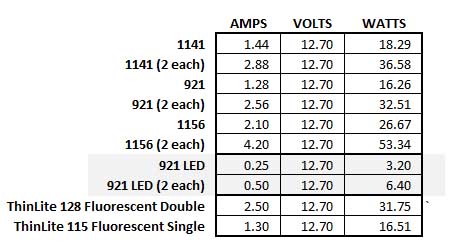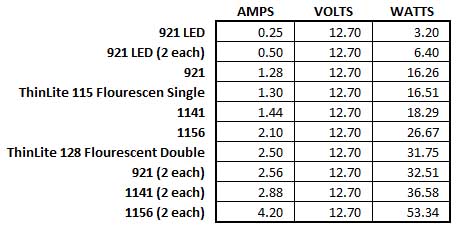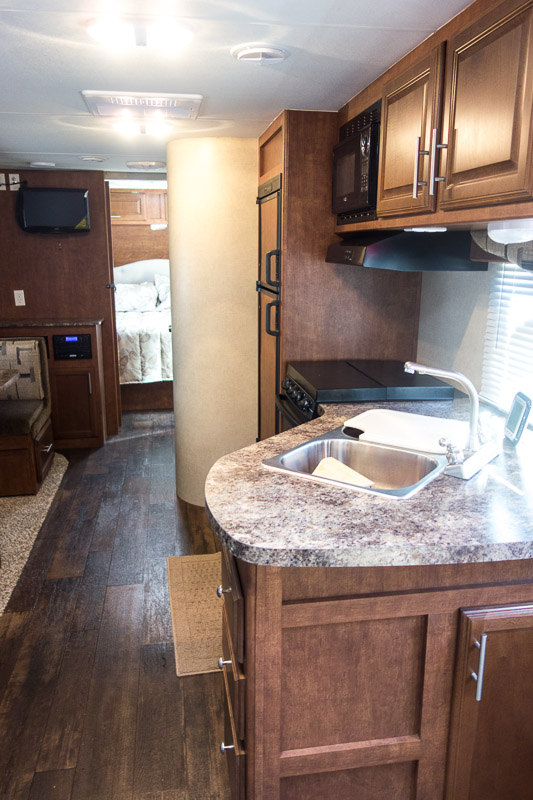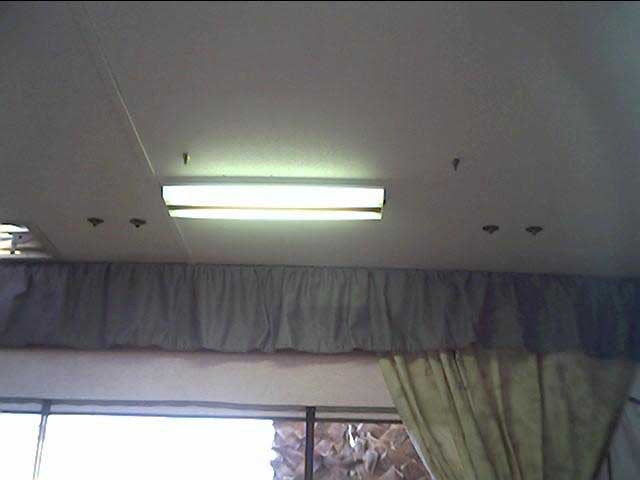If you don’t camp in full service campgrounds (I hope you don’t) then you are forced to power your camper with a 12 volt battery bank. You may have charging solutions such as solar (preferred) or maybe a generator (I hope not — too noisy).
Camping off the electrical grid requires monitoring your power consumption and in most cases conserving energy to some degree. Most campers come with automotive-type incandescent bulbs, which aren’t very efficient and are power hogs.
1992 Starcraft Meteorite
I first tackled this problem in 2003 when we added a 120 watt solar system to our 1992 Starcraft Meteorite. The original equipment interior #1156 lights did a poor job of lighting and the pair consumed almost 3 amps. At the time most LED bulbs did poorly at area lighting and produced a thin beam that was better suited for task lighting. With a usable battery bank of 96 amp hours (50% of the total battery capacity) and minimal electrical consumers the strategy was for quality lighting. The solution was a ThinLite brand 12 volt double fluorescent light fixture that used 2.5 amps versus 3.0 amps consumed by the original bulbs.
Although the fluorescent fixture runs on 12 volts, it used standard 120 volt fluorescent tubes that can be found at any hardware store.
2006 Fleetwood Niagara
We purchased this camper in October of 2005 and faced the same lighting issues — it came with incandescent automotive-type (#1141) bulbs, which drew about 1.44 amps each. Since the interior was larger that our previous camper there were more light fixtures. Three fixtures used two bulbs each, and one was a single bulb fixture. Total amp draw was 10 amps.

Since LED light technology was still not where I wanted it to be, we ended up adding five ThinLite Fixtures with a total draw of 11.3 amps.

This gave us one more fixture and much, much better lighting. Given that we had a 250 watt solar system with 130 usable amps (50% of the total capacity) in our battery bank, power consumption was not an issue.
2014 Eclipse Milan 26RLS
When we purchased our Milan, our first modifications were a solar system with 280 watts power and a 226 amp hour battery bank. Again, we would need to change the lighting. The Milan came with 10 light fixtures — a mix of single and double lights, all with #921 automotive-type bulbs with a total amp draw of almost 29 amps for all of the 20 bulbs.
Since ThinLite fixtures run $60-$70 dollars each depending on model, I was not willing to spend over $700 for new fixtures, not to mention all the work involved in changing out 10 fixtures. So I revisited the LED solution. Much had changed in the past 10 years. Improved designs and many options now made this technology viable.
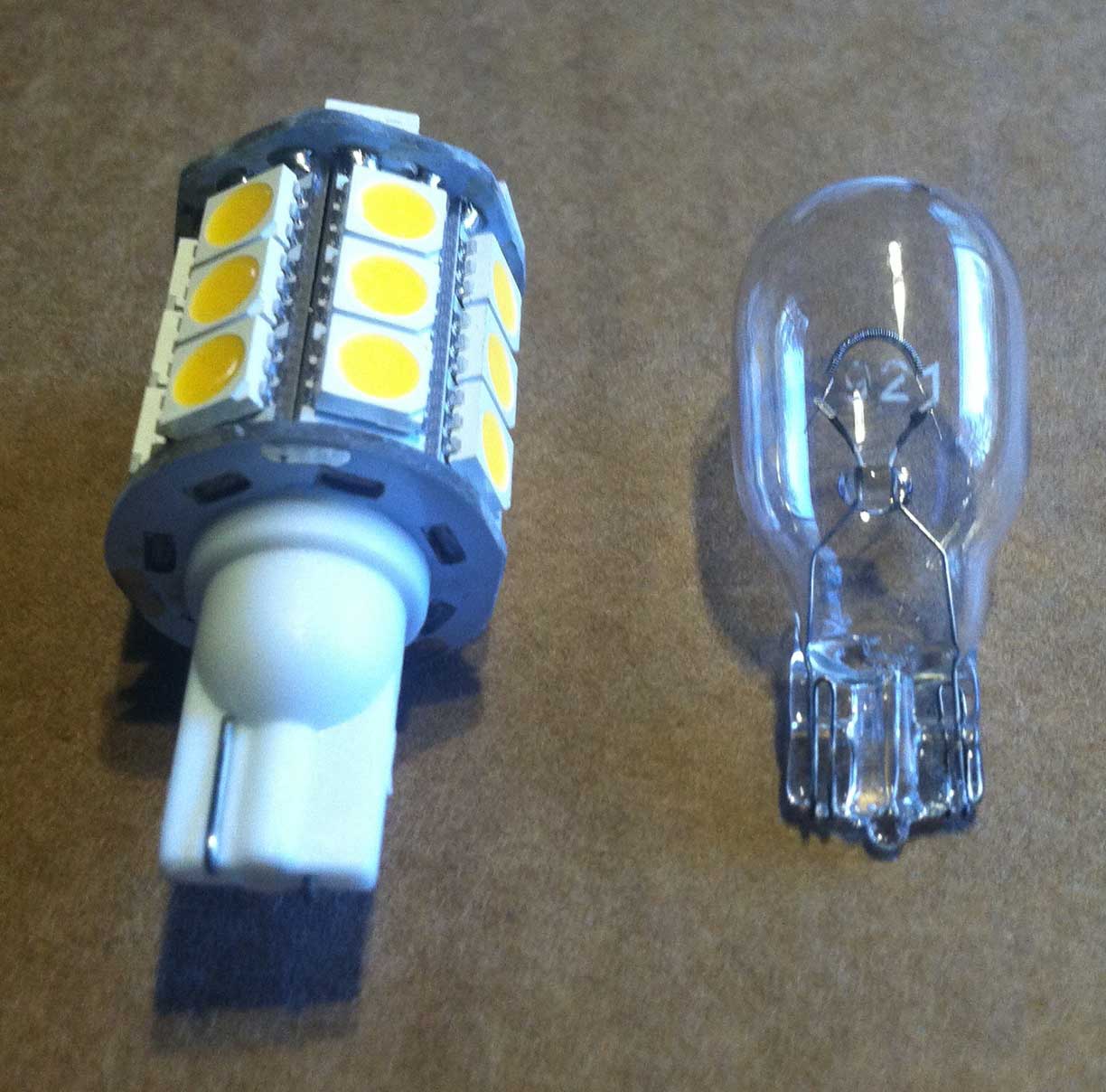
A single 921 auto bulb draws 1.28 amps, a 921 LED bulb only .25 amps.
By replacing only the bulbs with LED units I could reduce the total amperage of all the lights from almost 29 amps to 5 amps. Of course we are not going to turn on all the light fixtures at one time.
Additional advantages of the 921 LED versus a plain 921 include:
- Life of the LED is 50,000 hours vs. 1,000 for the auto type
- Lumens of the LED is 360 (brighter) vs. 270 for the auto type
- Cost over lifetime LED is cheaper (about 1/3 less)
The only disadvantage of the LED is the initial investment of $16 each, versus $1 for a plain 921.
Do the Math
Using Watts law we can calculate amps or watts for popular bulbs.
Watts = Amps X Voltage
